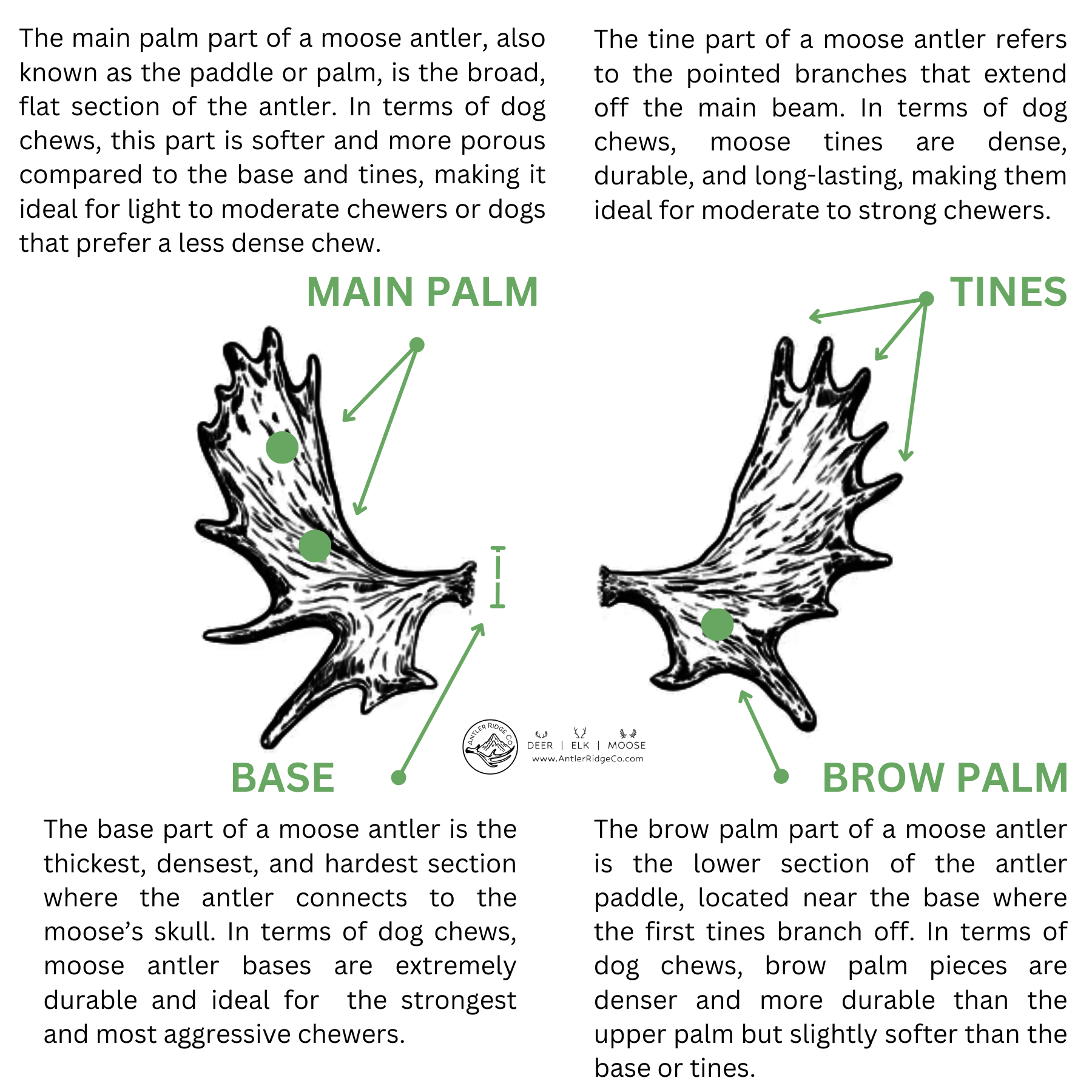In the Know with Antler Terminology
MOOSE ANTLERS
Moose antlers are some of the largest antlers you will find. With an antler that large, it’s no wonder why there are multiple components of the antler. Antlers from different animals have similar and different terminology as it relates to the different parts of the antler. Below are some common terms for Moose Antlers.
Base or Pedicle - The raised bony rim closest to the skull where the antler originates and attaches to the animal
Main beam: The thick stalk that grows from the base and supports the palm and brow palm
Palm: The flattened areas that extend from the beam
Main palm: The outermost and usually widest part of the antler
Brow palm: The first antler appendage on the main beam that extends forward
Bay: A wide indentation that often separates the brow palm from the main palm
Tine or point: A projection that is longer than one inch and longer than it is wide
Brow tine: A tine that emerges from the brow palm
Spread: The total width between the widest points on each side of the antler
DEER & ELK ANTLERS
Deer antlers can range from only a few inches in length to weighing several pounds. Below are some common terms for Deer Antlers.
Base or Pedicle - The raised bony rim closest to the skull where the antler originates and attaches to the animal
Beam - Central stem of the antler
Burr – Bony rim of the pedicle.
Brow Tine – The point at which the first antler branches off.
G2 Tine – The second branching-off point.
G3 Tine – The third branching-off mark.
G4 Tine – Fourth branch on a separate tine of a deer’s antler.
Fork or Split – End of the antler that forks out into two tines.
Crown – The top tine on the deer’s antlers.



